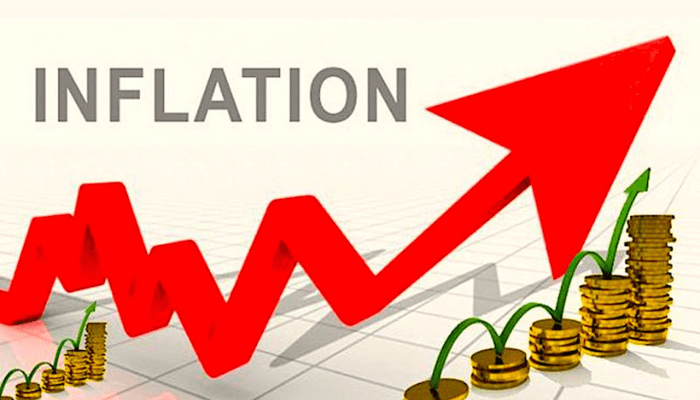4
LAGOS – Nigeria’s brief run of disinflation may be losing momentum as fresh cost pressures from energy and transport threaten to reverse recent gains in price stability.
Ahead of the October inflation print, analysts project that headline inflation will ease modestly to 16.29% year-on-year (y/y), down from 18.02% in September, marking the third consecutive month of cooling prices.
However, the month-on-month (m/m) trend tells a different story — one that suggests underlying price pressures remain stubborn. Inflation is expected to tick up slightly to 1.17% m/m, reflecting rising costs across core components such as transportation, energy, and services.
This moderation, though welcome, may not be sustainable. Economists warn that renewed inflationary pressures are brewing as temporary supply-side disruptions, energy price hikes, and festive season demand converge.
The October inflation report is expected to show that Nigeria’s disinflationary trend — which began in mid-2025 — is persisting but losing speed. While improved food supply from the ongoing harvest season has helped stabilise prices of key staples such as grains, tubers, and vegetables, the benefits are being eroded by resurgence in core inflation drivers.
“Food inflation remains on a downward trajectory due to increased market supply,” one analyst noted, “but the disinflationary effect is being partly offset by rising costs in non-food components, especially transport and energy.”
Indeed, core inflation — which excludes volatile food and energy prices but remains sensitive to cost-push shocks — is expected to edge higher in October. This is largely linked to the recent rise in Premium Motor Spirit (PMS) and liquefied petroleum gas (LPG) prices, both of which have a significant pass-through effect on household and production costs.
The trigger for this renewed cost push came from an unlikely source — the PENGASSAN strike, which temporarily disrupted fuel distribution in late September and early October. The strike’s ripple effects were immediate and far-reaching.
The average retail price of PMS climbed from about N865 to N922 per litre, while cooking gas prices jumped from N900 to N1,300 per kilogramme. These spikes have filtered through to transportation costs and household energy expenses, heightening inflationary risks across both urban and rural centres.
“The increase in PMS and gas prices is not just about direct energy consumption,” another economist explained. “It affects logistics, production, and the overall cost structure of goods and services. These secondary effects tend to linger longer than the initial shock.”
Even as normal supply resumes, the inflationary imprint of these increases will likely persist through the last quarter of the year, particularly as businesses and transport operators adjust fares and prices to reflect higher input costs.
Agricultural output has provided some cushion. The ongoing harvest season has eased price pressures on staple food items, particularly in northern and middle-belt markets, where bumper yields of grains and root crops have improved availability.
“Price moderation in food markets has been noticeable,” says a trader at Mile 12 Market in Lagos. “Yam, beans, and maize have become more affordable compared to August levels, but transportation costs are making distribution to southern states expensive again.”
Indeed, while farm gate prices may be stabilizing, logistics costs continue to rise, limiting the full transmission of lower farm prices to consumers. With the harvest season expected to taper off by December, analysts believe the window for food-driven disinflation is narrowing.
One bright spot in Nigeria’s inflation story is the relative calm in the foreign exchange (FX) market. After months of volatility earlier in the year, the naira has stabilized across both the official and parallel windows, helping to contain imported inflation.
“Exchange rate pass-through remains moderate,” the report noted. “The stability achieved through increased FX supply from the Central Bank and sustained capital inflows has cushioned the impact of global price pressures.”
Still, the persistence of core inflation highlights how domestic factors — particularly energy and logistics costs — are now more influential than external price shocks.
The disinflationary momentum is likely to face further challenges in November as consumer demand rises ahead of the festive season. Traders are expected to restock aggressively, which could add upward pressure to prices, particularly for perishables and imported goods.
Compounding the risk is the recent 15% levy imposed on imported fuel, aimed at discouraging importation and boosting local refining capacity. The policy, while supportive of long-term energy security, could trigger short-term price adjustments if supply gaps emerge.
“There’s a growing risk of artificial scarcity around the holidays,” warns one analyst. “Marketers might slow distribution to adjust to new levies, which could temporarily lift PMS prices. That would feed directly into transport and logistics costs.”
With these dynamics at play, inflation may begin to edge up again from November through the first quarter of 2026, unless supply conditions improve or fiscal measures offset cost pressures.
The evolving inflation landscape sets the stage for a cautious Monetary Policy Committee (MPC) when it convenes later this month. The Central Bank of Nigeria (CBN) has consistently emphasised a data-driven approach, prioritising inflation and exchange rate stability as key policy anchors.
Given the potential reversal of recent month-on-month declines, most analysts believe the MPC will resist the temptation to ease policy just yet.
“The Committee will likely maintain its tight stance,” said a Lagos-based economist. “Although headline inflation is slowing in annual terms, the stickiness in monthly readings and the risk of festive season demand argue against premature loosening.”
The CBN Governor has reiterated that monetary decisions would remain guided by “evidence-based assessment of inflation dynamics,” signaling that rate cuts are unlikely until the disinflation trend becomes more entrenched.
For policymakers, the dilemma is clear: how to sustain economic growth momentum without reigniting inflation. With GDP expanding modestly in Q3, there’s pressure on the Central Bank to support credit growth and lower borrowing costs. But doing so too early could undermine the fragile progress made on price stability.
“Monetary authorities will have to balance inflation management with the need to stimulate private sector activity,” says another analyst. “Given the structural nature of Nigeria’s inflation — driven largely by supply constraints — aggressive tightening has limited impact beyond the short term.”
As Nigeria approaches year-end, the inflation outlook remains mixed. The October data may confirm that disinflation continues, but the relief is fragile and uneven. Food prices are moderating, yet energy and transport costs threaten to undo recent gains.
If policymakers succeed in maintaining FX stability and curbing artificial fuel scarcity, inflation could continue its gradual descent in early 2026. But for now, the message is clear: Nigeria’s disinflation is slowing and the next few months will test the resilience of both consumers and policymakers.








